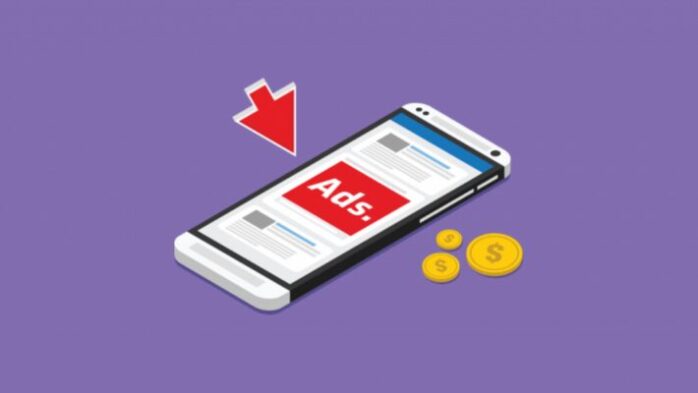
Mobile advertising grew to a $190 billion industry last year and with no indicators of slowing down, it’s actually expected to surpass 280 billion USD in just two years by 2024. Oh and also, the research shows that 81% of Americans are mobile phone users which, of course, makes mobile one of the most effective ad solutions these days. We do know that in our new mobile-first reality people are inseparable from their mobiles, our tech-savvy generations spend more time on their phones than on any other device, and for them mobile internet is the internet.
Overall, advertising through these glued to customer’s hand screens can offer marketers awesome benefits: highly precise targeting, immediate engagement, accurate location-based information delivery, effective data collection and much more. The world of in-app mobile advertisement keeps rapidly growing and evolving so all of us just going to have to buckle up for the ride and do our best to avoid damming mistakes along the way. We have 5 of those for you today.
1. Treating mobile like it is a mini desktop computer

Mobile ads aren’t teeny-tiny versions of the desktop ones and why companies choose to treat them as such is beyond understanding. Shrinking ads to fit smaller mobile screens won’t fly here at all – the tech-savvy crowd will spot that lack of effort on your part. Most of the differences can be easily pinpointed and addressed, you just have to pay attention to the way users experience desktop vs. mobile. For example, common sense should tell you to cool it with the amount of content, because scrolling and scrolling on mobile is not anyone’s cup of tea. Furthermore, we all know that mobile has a really limited memory when compared to desktop, hence avoiding intensive graphics and videos should be a no-brainer. Mobile users are on-the-go customers, meaning the desktop recommendation of “fewer words, more visuals” should become a non-negotiable rule for mobile ads.
Mobile ads must be unobtrusive, with short and engaging massaging and easy-to-follow calls to action. The biggest thing that separates mobile ads from desktop ads is location-based targeting, hence there is a sense of immediateness with mobile ads and customers are more likely to immediately act. Then there’s the need to make your ads digestible without any sound whatsoever as more often than not mobiles are used in public places. Honestly, there are a hundred and one things that differ, and assuming that desktop and mobile are the same experiences for the user is a huge mistake that can seriously damage any ad campaign.
2. Subpar understanding of the mobile ad types and formats

It’s crucial to understand what in-app ad types and formats would be beneficial for your ad campaigns and ultimately help you reach your goals. To meet demand and ensure visibility among a sea of competitors a knowledgeable approach to in-app advertising should be a rule, you cannot be choosing your ad-formats willy-nilly and hope for the best. That approach isn’t a productive one. Now, we are not proposing studying and analyzing all of the available formats, how they work, what they can be used to do, the pros and cons, etc. That’s a mix of practical and theoretical knowledge that can’t just be obtained in a jiffy.
The best suggestion here is: find yourself an exceptionally professional ad network that’ll do the job for you and help you to keep up with the ever-changing types and formats. eMarketer says that almost 90% of mobile usage time is spent in-app, so you have to make sure that you know how to use all of that time wisely and reach your customer base. The right ad format will help you to boost engagement, retain your existing customers, increase conversions and revenue. If you read this blog article from Admixer you’ll see exactly how you can benefit if you partner-up with a knowledgeable ad network. Check out their detailed guide to best mobile types and formats you’ll be deciding between the swipe, scratch or cube formats like a pro in no time.
3. Using a weak DSP

Unlike all of the others, this one can actually harm ad campaigns and brands as well. Mobiles bring a sort of one-on-one very personal conversation to advertising, thus people pay more attention to mobile ads. And the right approach to in-app ads can effectively increase product awareness and boost sales. A sub-par DSP with unimpressive data analytics, poor targeting options, and insufficient inventory will help you achieve the exact opposite. The art of effectively attracting and converting the right audiences via mobile devices is less of an art and more of data-driven science, with the right DSP that is. A professional DSP has an advertiser-centric approach first: they offer a continuously growing premium mobile inventory, access to large-scale publishers, SSPs as well as ad networks and exchanges.
Though the most exciting thing for mobile advertising able to drive real engagement is precise targeting that allows us to accurately target clients based on a multitude of data points. By advertising in mobile apps, advertisers get access to targeting possibilities that are absolutely not available with any other ad channels. According to Google, 91% of smartphone owners purchased or planned to purchase something after seeing an ad they described as relevant, so striving for relevance with precise targeting should be an unquestionable priority. However, there are other unique aspects that a good DSP brings to the table and shouldn’t be overlooked when searching for one: detailed reporting, human monitoring and fraud detection tech that offer exceptional brand protection.
4. Ignoring the trends

This one is among the biggest no-nos. Advertisement is all about customer engagement, so why would you knowingly turn away from something customers welcome in their phones? Staying in your comfort zone is only comfortable to you, sticking to one type of content won’t do in 2024. So, whatever is trending today – whether it is in-app gaming ads, mobile video advertising or augmented reality – you need to get on that trend train. Just take a look at rewarded in-app video ads, for example, they are actually on their way to becoming all-round winners for everyone – publishers, advertisers, and customers.
In fact, 68 percent of people have a positive attitude towards rewarded ads, people know they will be rewarded for their time, while sell-side and demand-side both see the highest view-through or completion rates. Then there are the playable in-app ads which in essence are games for consumers and successful customer engagement for advertisers. Playable ads are interactive, informative and highly memorable. They were already popular for more than a few years within game apps, but now ad gamification is taking a center stage and everyone wants a piece. So, this mistake is easily avoidable: pay attention and invest in whatever it is trending amongst your customers.
5. Not analyzing results

Some mistakes are so common they are not even viewed as mistakes, and this one is one of them. Companies spend time and money, invest in data analytics, tracking and gathering crucial data and then just move on to the next campaign without properly going through gathered information. Marketers should never be too busy for result analysis. Proper analysis of your in-app advertising data will help you to offer highest levels of ad personalization make well-informed data-driven changes to your mobile ad campaigns and effectively adjust your in-app ad strategy.
Now, you can, of course, go ahead and start your educational journey in math, computer science, statistics and everything involving data science and analytics, or, perhaps you can just opt for a professional DMP. Great data management platform will collect, organize, prioritize, analyze all of the data and present it to you in a very helpful and actionable way. By taking the time to find competent DMP you’ll be able to have all of your vital data in one place which in turn will help you to paint a complete picture of your customers, you’ll be able to carry on campaigns with custom segmentation, and in full compliance with the GDPR.






